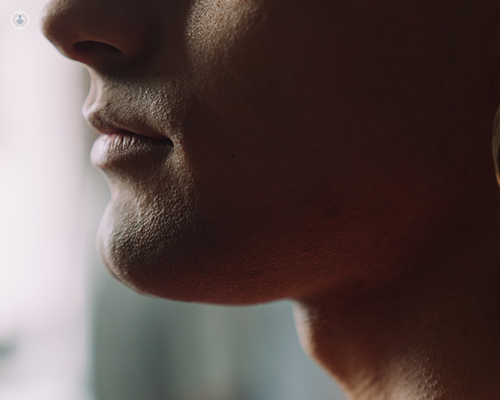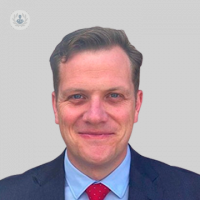Salivary gland removal: When it's needed and what to expect
Written in association with:Salivary gland removal, also known as a sialadenectomy, is a surgical procedure that involves the removal of one or more salivary glands. This type of surgery may be necessary for various medical conditions that affect the normal function of the salivary glands.
Mr Alex Goodson, renowned consultant maxillofacial surgeon, provides an expert insight into salivary gland removal, what it involves, recovery time, and any follow-up treatments that may be required.

Why might I need salivary gland removal?
Salivary glands play a key role in producing and releasing saliva, which is essential for maintaining a healthy mouth, aiding digestion, and preventing infections. There are three pairs of major salivary glands: the parotid glands (located in front of the ears), the submandibular glands (located beneath the jawline) and the sublingual glands (located under the tongue). In addition, there are also numerous minor salivary glands throughout the mouth and throat.
Several medical conditions can necessitate the removal of a salivary gland. Some of the most frequent ones are:
- salivary gland tumours, whether benign or malignant
- chronic infections
- salivary gland stones
- cysts or abscesses
- autoimmune diseases like Sjögren’s syndrome
How is salivary gland removal performed?
Salivary gland surgery is typically performed by a specialist, such as an oral and maxillofacial surgeon. The procedure is done under either local or general anaesthesia, depending on the size and location of the gland, the complexity of the case, and your overall health.
The steps of the procedure can vary depending on the gland being removed:
Parotid gland removal
During the procedure, your maxillofacial surgeon will make an incision in front of the ear, extending down toward the neck. This will provide access to the gland, located close to the facial nerve. Depending on the case, the procedure will involve either partial removal (when the condition affects only the outer portion of the gland) or total removal (when the condition affects deeper parts of the gland or malignancies).
Submandibular gland removal
During the procedure, your maxillofacial surgeon will make an incision below the jawline to access the affected gland. Once the gland is exposed, your maxillofacial surgeon will then carefully dissect it away from surrounding tissues, before completely removing it. In cases where a tumour is present, surrounding tissue may also be removed to ensure clear margins and reduce the risk of recurrence.
Sublingual gland removal
During the procedure, your maxillofacial surgeon will access the sublingual gland by making an incision inside the mouth, specifically beneath the tongue. Your maxillofacial surgeon will then carefully remove the gland, working around several important structures, such as the lingual nerve and the submandibular duct.
Are there any potential risks and complications involved?
As with any surgery, there are risks associated with salivary gland removal, though they are generally low. Some potential complications include facial nerve damage, infection, excessive bleeding, and numbness or altered sensation around the incision site or in the surrounding areas.
How long does recovery take after salivary gland removal?
Most people can return home on the day of the salivary gland removal or the following day.
During the first week after surgery, you will experience swelling, bruising, and mild discomfort around the incision site. Pain is typically manageable with over-the-counter or prescribed pain relievers. The incision will need to be kept clean and dry, and any stitches or sutures will either dissolve or be removed during a follow-up appointment.
Full recovery will take up to six weeks, especially if surgery involved larger glands, such as the parotid. Some stiffness or tightness may remain around the incision site for a few months, but this will typically resolve with time.
Will I need any follow-up treatments after surgery?
If the surgery was performed to remove a benign tumour or to treat a chronic infection, additional treatment is often not necessary beyond regular follow-up visits to monitor recovery.
However, if the gland was removed due to a malignant tumour, follow-up treatments may be required. This could include radiation therapy or chemotherapy to eliminate any remaining cancer cells and reduce the risk of recurrence. In such cases, your maxillofacial surgeon and your oncologist will develop a personalised treatment plan based on your specific condition.
If you would like to book an appointment with Mr Alex Goodson, head on over to his Top Doctors profile today.


